Understanding Unconscious Bias and How to Mitigate Its Impact
Fostering a fair and equitable workplace is essential in today’s diverse and inclusive environment. Unconscious bias, however, is a powerful barrier that lurks beneath the surface of our conscious brains. Unconscious bias, often referred to as implicit bias, is a covert prejudice that can have a big impact on our choices, how we interact with others, and how the workplace functions as a whole. The purpose of this blog is to discuss unconscious bias, its sources, effects, implications for discrimination, and most significantly, mitigation strategies.
So What is Unconscious Bias?
The term “unconscious bias” refers to prejudices we have but are not aware of. These prejudices develop throughout time as a result of our upbringing, experiences, and cultural influences. Our perceptions and conclusions are shaped by them, which frequently results in unfair treatment or judgments. Unconscious prejudice can apply to a variety of factors, including age, disability, religion, race and gender.

Examples of Unconscious Biases
Let’s look at a few typical examples to help you understand the idea of unconscious bias:
1. Confirmation Bias: This occurs when we look for evidence to support our existing opinions. It could result in employers giving preference to workers who share their perspectives.
2. The Halo Effect: is the tendency to infer that someone is successful in one area because of their perceived success in another. This may result in bias or promotion based on unrelated qualities.
3. Affinity Bias: We have a tendency to favor people who share similar interests, backgrounds, or hobbies. Within teams, this bias may result in favoritism or exclusion.
4. Stereotyping: Our judgment can be tainted by preconceived ideas about particular groups. For example, presuming that women are less assertive might hinder their work accomplishments.
The Impact of Unconscious Bias
The effects of unconscious bias at work can be profound. It may have an impact on hiring processes, promotions, work reviews, and even regular interactions between coworkers. Implicit bias has a sneaky way of sustaining inequality and hinders efforts to promote diversity and inclusion.
Unconscious Bias Causes:
In order to reduce the effects of unconscious bias, it is crucial to understand its underlying roots. Among the most important ones are:
1. Cultural Conditioning: Our upbringing and cultural background play a crucial influence in forming our biases.
2. Media Influence: Stereotypes and media representations can reinforce biases.
3. Insufficient Exposure: Little encounters with diverse groups can result in prejudice and misunderstandings.
4. Favoritism Inside the Group: We often show preference for those who we believe to be a part of our “in-group.”
Effects of Discrimination and Unconscious Bias
Discrimination, which can take many different forms, is frequently caused by unconscious bias. For marginalized groups, it might lead to unfair pay, a lack of job opportunities, small-scale harassment, and general workplace unhappiness. A prejudiced workplace may also result in lower productivity, higher staff turnover, and a tarnished reputation.

10 Ways to Mitigate Unconscious Bias
Mitigating unconscious bias is difficult and takes constant effort and self-awareness. Some solutions to this problem in the workplace are as follows:
- All employees should undergo training to eliminate unconscious bias. Awareness can be raised and biases can be identified and addressed with the use of such programs.
- Adopt inclusive hiring procedures like blind resume screening, forming diverse interview panels, and establishing specific diversity targets.
- Third, promote open dialogue about bias and encourage workers to reflect on their own personal biases. Establishing a secure zone for open conversation is essential.
- Mentoring and sponsorship programs should be promoted to enable employees from underrepresented groups move up the corporate ladder.
- Create a way for people to report occurrences of prejudice or bias without revealing their identities.
- Decisions should be data-driven so that any bias in pay, promotions, or other perks can be corrected.
- Review corporate policies and processes on a regular basis to make sure they support the organization’s diversity and inclusion objectives.
- Foster Inclusive Leadership by urging leaders to set a good example through their own inclusive actions.
- Monitor the progress towards your diversity and inclusion objectives, and make any necessary changes to your approach.
- Think about getting advice from outside sources by talking to diversity and inclusion specialists.
Discover a welcoming community of employers at IDJF who are eager to support your career aspirations. IDJF is inviting job seekers to connect with employers who value diversity and are actively seeking candidates with disabilities, women, LGBTQ+ individuals, war veterans, and women on a career break. Your Future Employer is looking for you at IDJF! Sign Up to Connect
How to Reduce Unconscious Bias in Decision Making
When making a decision, it is essential to recognize your own biases and take measures to reduce their influence. Here are some guidance:
- Take a moment to pause and reflect. Before making a decision, reflect on your innermost sentiments. Consider whether you are influenced by your biases.
- Seek out alternative viewpoints. Discuss the decision with individuals from various backgrounds and with differing points of view in order to receive their input. This can assist you in recognizing any biases you may have overlooked.
- Utilize data and facts. Maximize your reliance on evidence and data when making a decision. This can aid in reducing the impact of bias.
- Maintain openness and accountability. Be open to answering inquiries regarding your decision-making process. This can aid in making sure your decisions are fair and equitable.
In conclusion,
The Equal Employment Opportunity (EEO) policy in India is a crucial element in promoting an equitable and inclusive workforce. Through the promotion of equal employment opportunities, equal pay, and a workplace culture that values diversity, these policies contribute to a more equitable society. Employers and employees must both embrace and support EEO principles in order to create workplaces that reflect the rich diversity of India’s population. By doing so, we can aspire for a future in which every person, regardless of background or characteristics, has an equal chance of success.
Equal Employment Opportunity policies in India are more than just a legal requirement; they represent a commitment to building a just and inclusive society. These policies are essential for ensuring that everyone on the labor market competes on an equal playing field, regardless of background or personal characteristics. As India continues to develop, EEO policies will play a greater role in shaping the country’s workforce and nurturing a more equitable and prosperous future for all. It is the responsibility of both the government and the private sector to work



